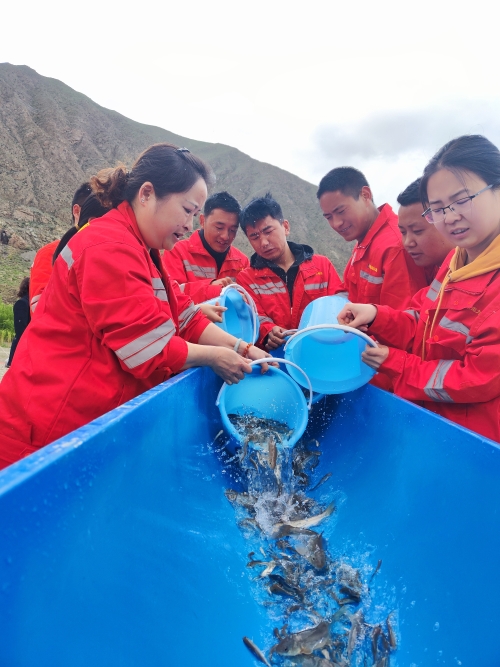
Staff workers from Sinohydro Bureau 9 attend a fisheries' resource enhancement and releasing activity on June 8.
The Dagu (DG) Hydropower Station, which was built by Sinohydro Bureau 9 Co., Ltd. and is the largest hydropower project for domestic demand in Southwest China's Tibet autonomous region, attended a fisheries' resource enhancement and releasing activity on June 8 to show its support to the conservation of bio-diversity.
The event drew the attendance of government departments, local residents, teachers and students from Baidui Primary School in Sangri county of Shannan (Lhoka), and staff workers from Sinohydro Bureau 9, a subsidiary of POWERCHINA.
At the gathering, attendees jointly released 70,000 baby fish, which included five fish species under A-level protection and those endangered ones in the autonomous region, into a river.
The participation in the fisheries' resource enhancement and releasing activity was a concrete effort made by Sinohydro Bureau 9 to aid local government agencies and the construction department of the DG Hydropower Station in the enhancement of aquatic ecological conservation.
It is of great importance to protect and restore the integrity of the ecological community and aquatic ecological system, improve the ecological environment and fisheries' resource, protect bio-diversity and promote the sustainable development of relevant rivers.
During the past few years, Sinohydro Bureau 9 has proactively taken part in the construction of key projects related to ecological conservation, hydropower development and the utilization of clean energy in Tibet.
For instance, Sinohydro Bureau 9 has leveraged prefabricated pathways to facilitate the migration of fish in the building of hydropower projects in the autonomous region. Statistics show that the firm has released a total of 423,000 rare wild baby fish to strengthen the protection of local aquatic ecological environment.